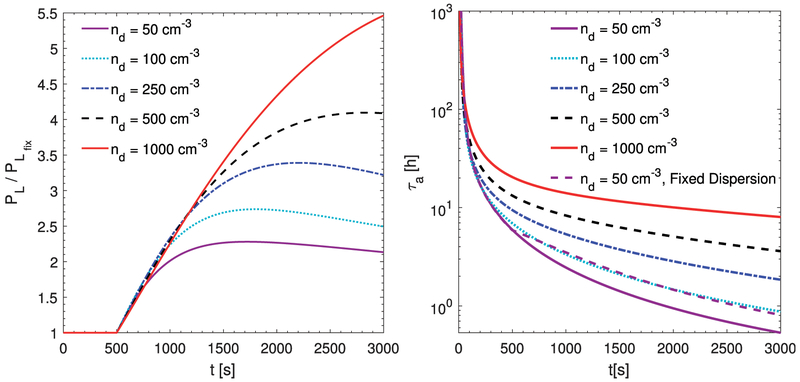FIG. 8.
Autoconversion rate and autoconversion time scale as a function of time in a rising cloud parcel, obtained from the theoretical expression based on the gamma droplet radius distribution. Five different cloud droplet number densities are assumed in order to understand the role of the turbulence-broadening effect. (left) The ratio of the autoconversion rate, as predicted by the theory, to the autoconversion rate, assuming fixed size distribution width. The corresponding fixed dispersion cases are arbitrarily set with dispersion growth stopped after 500 s. (right) The time dependence of the autoconversion time scale for different cloud droplet number densities. The time-varying gamma distribution parameters for a rising cloud parcel are obtained from the stochastic theory of droplet growth presented in this section. Atmospheric conditions used for the stochastic condensation growth calculation are cloud base temperature of 278 K, τt = 20s, , and σs,0 = 0.01. Each of the profiles is for a fixed droplet number concentration (50, 100, 250, 500, and 1000 cm−3). For the n = 50 cm−3 d case, τa is also shown for a constant dispersion after t = 500 s to demonstrate the effect of stochastic dispersion growth in the auto-conversion process (i.e., compare the dashed and solid purple curves).

